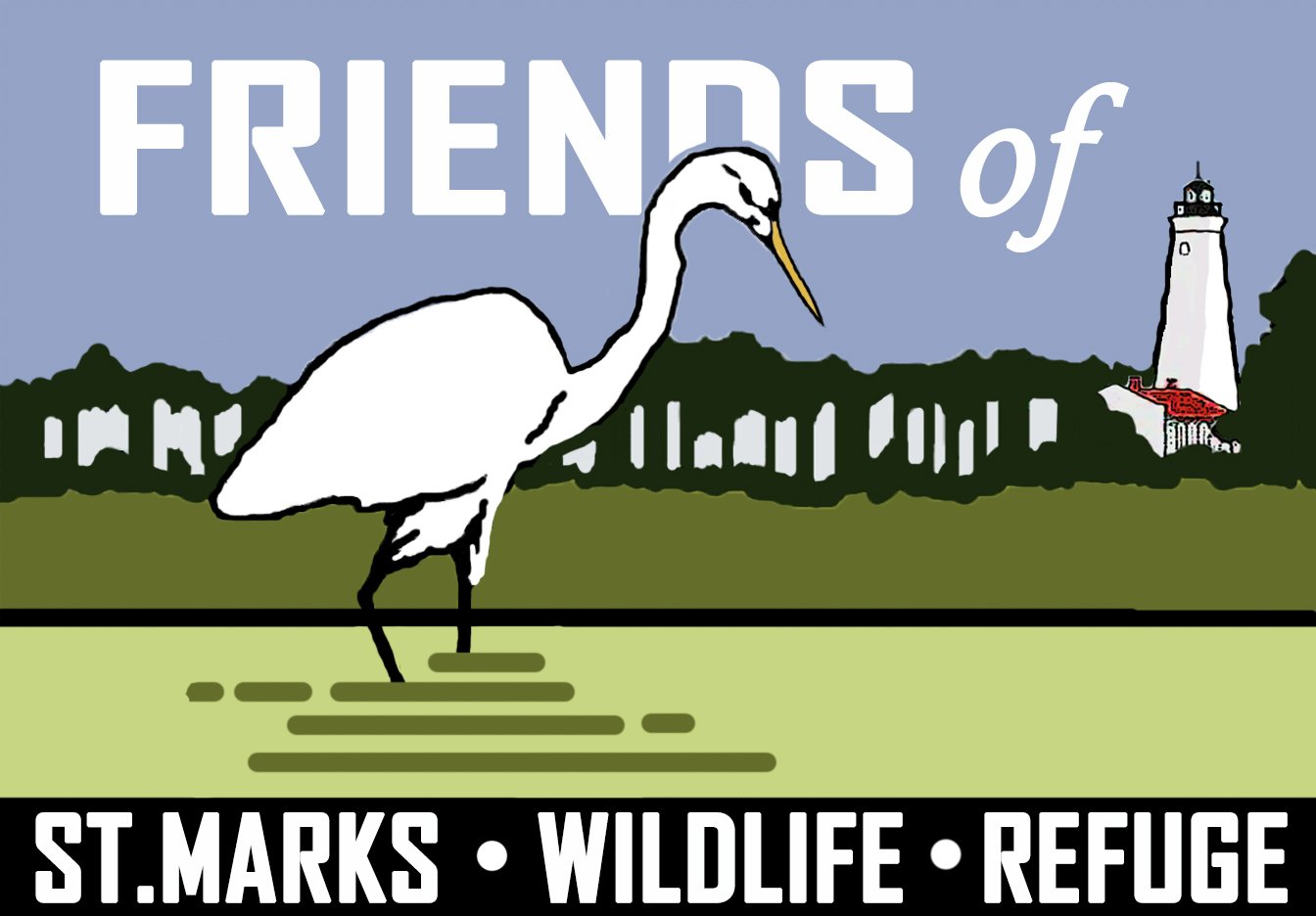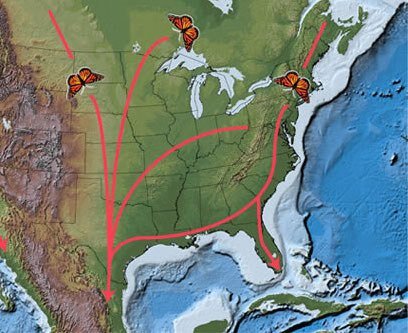Monarch Milkweed Initiative
Background
The Monarch-Milkweed Initiative was launched at St. Marks NWR in the spring of 2015 in response to the federal initiative to “Save the Monarch!”.
Refuge Ranger Scott Davis has developed a long-term plan to support the Monarch Butterfly in the Big Bend of Florida by sourcing local ecotypes (genetically distinct to a geographic area) of milkweed species to provide an ongoing viable seed source for the refuge, as well as distributing as many seedlings as possible to the conservation lands.
And Friends of St. Marks Wildlife Refuge is supporting this project by providing funding for the interns who work with Scott.
About the Monarch Butterfly
Monarch Butterflies are stunning. And the annual migration of the Monarch butterfly is an incredible story. One researcher calls it “one of the most spectacular natural phenomena in the world”. The following maps are from the USDA Forest Service [2].
Spring Migration Map
Fall Migration Map
The eastern population of monarch butterflies migrates both north and south annually. But no individual makes the entire round trip; 3 to 4 generations are involved start to finish. Female monarchs lay eggs for the next generation during the northward migration. Every year they embark on a journey that takes them on a route as long as 4,800 miles from overwintering sites in central Mexico to southern Canada and the Northern United States.
Monarchs Need Milkweed
Asclepias perennis
Monarchs will only lay their eggs on milkweed plants since the newly hatched caterpillars will eat only the leaves of this plant. For any number of reasons, humans have eliminated much of the milkweed populations in the U.S. That, combined with habitat reduction in their overwintering site in Mexico, has pushed the spectacular Monarch migration close to extinction.
The Importance of the Milkweed Initiative
Thanks to efforts like the one headed up by Ranger Scott, not only are thousands of milkweed plants being propagated for distribution to nurseries and other government agencies in the panhandle, but groundbreaking research in soil composition and local monarch population is taking place. And this is all happening right here at St. Marks with help and support from Friends members and donors and the generosity of our sponsors.
Intern Preston Earley on the Importance of the Milkweed Initiative
“We have species on the refuge that you can hardly find anywhere else in the country. There are 21 species of milkweeds native to North Florida. One of our main goals is to learn more about and save significant Milkweed plant families in north Florida.” – Preston Earley, Intern
Significant Discoveries
on the Velvetleaf Milkweed: “The Velvetleaf Milkweed has proven to be one of the most ecologically important plants for Monarch butterflies in this region. A significant discovery that we uncovered here at the refuge is that this is our only saltwater tolerant milkweed. And we have spent the last two years figuring out how to grow it.” – Ranger Scott Davis.
on the Sandhill Milkweed: “[one of the sites on the refuge] illuminated for us all of the different aspects of the requirements that enabled us here at St. Mark's to figure out how to grow this plant. We are growing lots of it – for outreach and for conservation. Our partners are receiving these plants: FDOT, FDEP, … It all comes down to coming out here, [in the refuge] boots on the ground, finding these plants (myself, interns and volunteers), taking notes and understanding what's going on above and below ground and sharing that information with the community.
People are emailing the refuge, including people like Tall Timbers, and saying "we have these milkweeds, what are we doing wrong, what are we doing right, how do we get them to reproduce?" All because of this cool place, right here in the Refuge.” – Ranger Scott Davis.
Scott Davis, with intern Preston earley, talks about how the discovery of Aquatic Milkweed in the St. Marks Refuge is rewriting records
Aquatic Milkweed: “Uncovering that a milkweed is available to Monarchs during the winter months in Florida rewrites absolutely everything that we thought we knew into something entirely different." – Preston Earley, Intern
Aquatic Milkweed: “What we had observed and discovered is that Florida, and this region, does in fact have an evergreen milkweed that never dies back and provides larval host food for Monarch Butterflies year-round. Which carries huge implications, which lead to researchers coming in from across the country to look at this plant, to research Monarch interaction with it. And as a result of what we have discovered here at this site in St. Marks, we are having to rewrite what we know about the Monarch butterfly and its migration through this region and across the United States." – Ranger Scott Davis"
[1] US Fish and Wildlife: Save the Monarch
[2] USDA Forest Service: Monarch Migration and Overwintering





